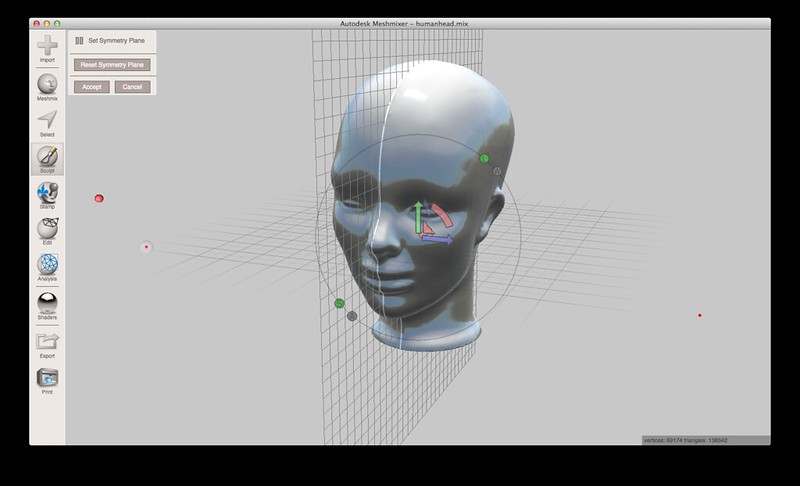
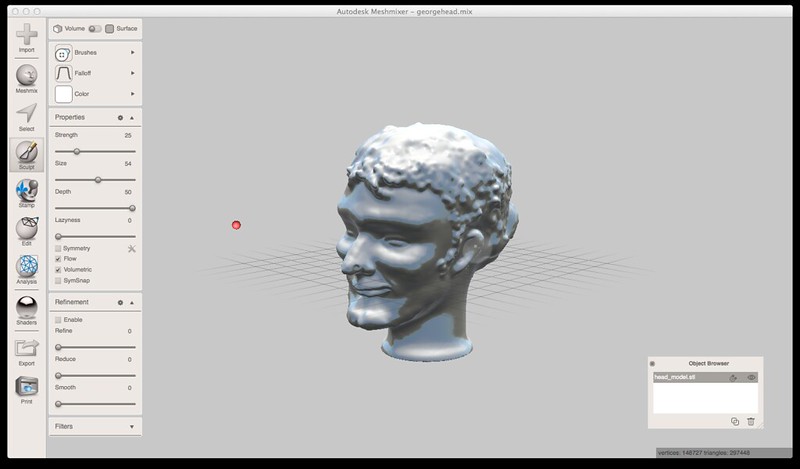
Began with a simple head model on thingiverse and then experimented with Meshmixer’s primitive sculpy tools for one pomodoro. This is basically like the iPad application - fun for a while but wildly inaccurate. The white line in the first image is the line of symmetry when “drawing”; your “drawing” will be mirrored on both sides. I found that it was better to add bits and small lumps one at a time (a bit like how one would model in wax with small fingertip-sized lumps to be slowly worked in) and finally just using BubbleSmooth to go over the lumpy bits.
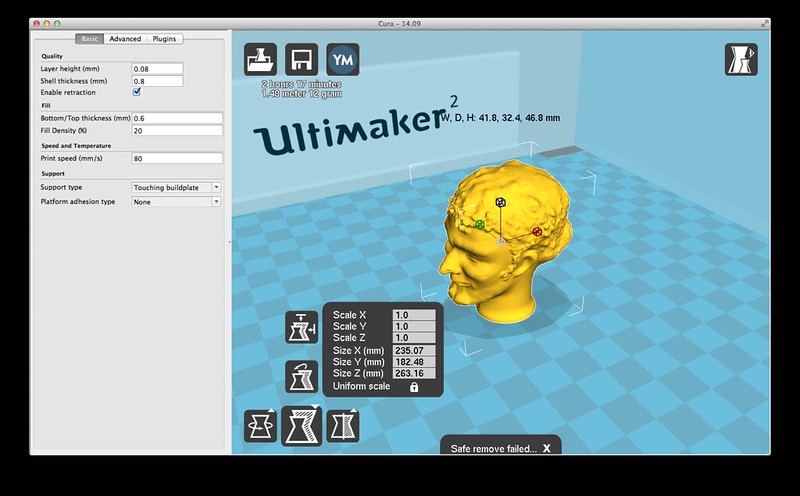
Sent it to print at a speed of 80mm/s. On hindsight this was too fast. Would set the print speed lower to around 40mm/s or 50mm/s for a small print like this in future...

Support structure didn’t stick well to build plate. Nevertheless I didn’t cancel print since I realised it would probably still complete the print. Do note a bit of “elephant’s foot” on the first layer as well.

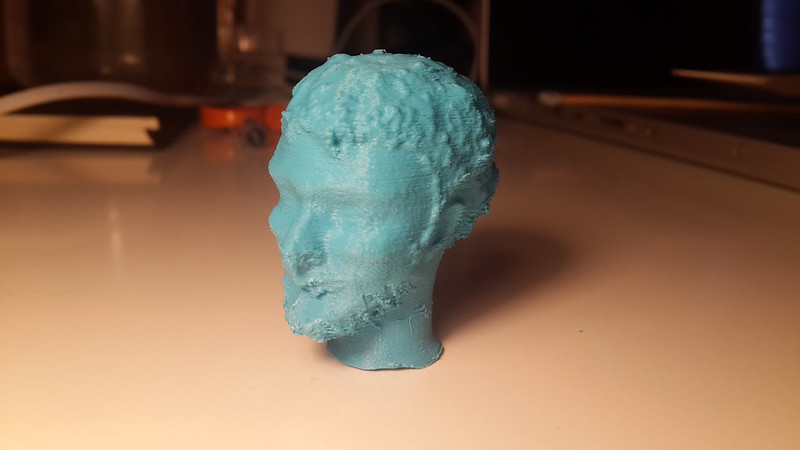
Completed Georgehead. Overhang was quite messy due to part of support structure detaching from build plate quite early on in the print. Nevertheless I think it benefitted from the support structure. Might use a different slicer next time around to see if the support structure is done better for the same model.
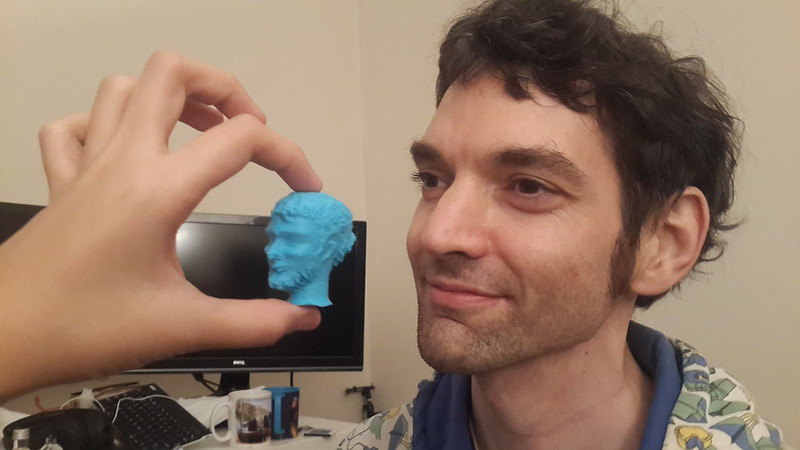
For comparison with the real Georgehead...
See also:
Georgehead on Thingiverse
My previous attempt at making a Georgehead in modelling wax at a Facial Reconstruction Class
No comments:
Post a Comment